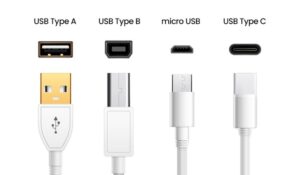Did you know that you can maximize the lifespan of your Tesla battery while it’s parked? If you’re wondering “how to save Tesla battery when parked,” look no further! In this article, we’ll provide you with practical tips and tricks to ensure that your Tesla battery remains healthy and efficient, even when it’s not in use. By implementing a few simple practices, you can take full control of your battery’s longevity and get the most out of your electric vehicle. So, let’s dive in and discover how to save Tesla battery when parked.
How to Save Tesla Battery When Parked
Introduction
As a Tesla owner, you know how important it is to take good care of your vehicle’s battery. Maximizing the lifespan and efficiency of your Tesla’s battery can save you money in the long run and help reduce environmental impact. One important aspect of battery care is ensuring it remains in good condition even when parked for extended periods. In this article, we will explore effective strategies and best practices to save your Tesla battery when parked.
Understanding Battery Drainage
When your Tesla is parked and not in use, its battery still experiences some level of drainage. This is known as “vampire drain” or “phantom drain.” Several factors contribute to this gradual loss of charge, including software processes, temperature regulation, and maintaining system readiness. While Tesla has taken measures to minimize vampire drain, it is important to adopt additional strategies to further preserve your battery’s charge.
1. Optimize Parking Location
Choosing the right parking location can make a significant difference in minimizing vampire drain. Consider the following tips:
- Park in a location with a stable Wi-Fi connection: Your Tesla can connect to your home or work Wi-Fi network, allowing it to receive software updates and perform maintenance tasks without using cellular data or draining the battery excessively.
- Avoid extreme temperature conditions: High temperatures can accelerate battery degradation, while extremely cold temperatures can negatively impact battery performance. Whenever possible, park in a shaded area or use a garage to regulate temperature extremes.
- Avoid areas with poor cellular coverage: If your Tesla has low or no cellular signal, it will consume more battery power trying to establish and maintain a connection.
- Prefer covered parking: Parking in a covered area such as a garage or carport shields your Tesla from direct sunlight, reducing the strain on the battery caused by extreme heat.
2. Enable Energy-Saving Features
Tesla vehicles come with various energy-saving features that can help reduce vampire drain:
- Enable “Energy Saving” mode: This setting limits energy consumption in the vehicle, optimizing various systems to minimize power usage when parked.
- Activate “Always Connected” sparingly: The “Always Connected” feature allows your Tesla to maintain a constant cellular connection, enabling features like remote monitoring and app control. However, when the vehicle is parked for an extended period, consider disabling this feature to save energy.
- Turn off “Sentry Mode” when not needed: While Sentry Mode provides additional security by recording video and monitoring the surroundings, it also consumes more power. If you are parking in a safe location, disabling Sentry Mode can help conserve battery.
3. Set Charging Limits
Managing your Tesla’s charging limits can help prevent unnecessary battery usage:
- Set a custom charge limit: While it is generally recommended to keep your Tesla plugged in whenever possible, you can set a specific charge limit using the Tesla mobile app or the vehicle’s interface. This allows you to avoid overcharging the battery and reduces the chance of vampire drain.
- Utilize scheduled charging: Tesla offers the option to schedule charging times. By aligning charging with off-peak hours or when renewable energy sources are more abundant, you can optimize battery charging while parked and reduce strain on the electrical grid.
Additional Tips to Save Tesla Battery
In addition to the strategies mentioned above, here are a few more tips to help you maximize your Tesla battery’s lifespan when parked:
1. Regularly Drive and Charge
Even if you’re not using your Tesla every day, it is essential to regularly drive and charge the vehicle. This allows the battery to remain active and prevents it from remaining idle for extended periods, which can lead to degradation. Aim to drive your Tesla at least once a week and keep the battery level between 20% and 80% for optimal health.
2. Keep Firmware and Software Updated
Tesla frequently releases firmware and software updates that include optimizations, bug fixes, and improved battery management. By regularly updating your Tesla’s software, you can benefit from these enhancements and potentially reduce vampire drain.
3. Use Tesla Mobile App
The Tesla mobile app provides valuable insights into battery status, energy consumption, and charging details. Use the app to monitor your vehicle’s battery and receive notifications, ensuring you stay informed about any changes or potential issues.
4. Consider Power Saving Accessories
There are various power-saving accessories available that can help reduce vampire drain when parked. For example, a battery-specific car cover or a trickle charger can provide added protection and maintenance to your Tesla’s battery during extended periods of inactivity.
By implementing these strategies and tips, you can effectively save your Tesla battery when parked. From optimizing parking locations, enabling energy-saving features, and managing charging limits to regularly driving and keeping your Tesla up-to-date, the key to ensuring a healthy and long-lasting battery lies in proactive battery care. Remember, a well-maintained battery not only saves you money but also contributes to a more sustainable future. Take care of your Tesla, and it will continue to provide a thrilling and eco-friendly driving experience for years to come.
Frequently Asked Questions
How can I save my Tesla battery when parked?
When your Tesla is parked, there are several steps you can take to optimize battery life and ensure it stays in good condition. Here are some helpful tips:
1. Should I keep my Tesla plugged in when parked for an extended period?
Yes, it is recommended to keep your Tesla plugged in when parked for an extended period. This allows the battery to stay at an optimal state of charge and ensures that the vehicle’s systems remain active for updates and maintenance tasks.
2. Is it better to leave my Tesla charging at full capacity or at a lower level?
It is generally recommended to leave your Tesla charging at a lower level, around 50-80% of its maximum capacity, when parked for an extended period. Charging to the maximum capacity and leaving it for a long time could lead to slightly faster battery degradation.
3. Are there any specific charging settings I should consider for long-term parking?
Yes, to optimize battery life when parking your Tesla for an extended period, you can set the charging limit to a lower percentage. This can be done within the vehicle’s charging settings or through the Tesla mobile app. A lower charging limit helps minimize stress on the battery and reduces potential degradation.
4. Should I enable “Vampire Drain” prevention mode?
Absolutely! Enabling “Vampire Drain” prevention mode, also known as Energy Saving mode, is highly recommended when parking your Tesla for an extended period. This mode helps minimize unnecessary power usage, preserving the battery charge by shutting down non-essential systems.
5. What about temperature management for the battery?
Ensuring an appropriate temperature range for your Tesla’s battery is important when parked. If possible, park your vehicle in a shaded area or consider using a sunshade to reduce direct exposure to heat. Extreme temperature fluctuations can negatively impact battery health.
6. Should I keep Sentry Mode activated while the vehicle is parked?
While Sentry Mode can provide added security, it consumes more energy, and enabling it for an extended period may drain the battery faster. It is recommended to disable Sentry Mode unless you are in an area where it is necessary for added protection.
Final Thoughts
To save your Tesla battery when parked, there are a few key strategies to follow. Firstly, ensure your vehicle is parked in a cool and shaded area to prevent unnecessary battery drain. Secondly, activate the “Energy Saving” mode on your Tesla to minimize power consumption. Additionally, avoid leaving your vehicle parked for extended periods with a low battery charge. Instead, keep it plugged into a charging station or use the “Scheduled Departure” feature to optimize charging times. By implementing these practices, you can effectively save your Tesla battery when parked and maximize your electric vehicle’s efficiency.



